Huge crops of wild plums ripen at the edge of woodlands across North America each fall, and most are left to the squirrels. The plums are small, only slightly bigger than a cherry, but most are flavorful and sweet. With a bit of added sugar, wild plums cook into a tasty wild foraged plum jam without any added pectin.
If foraging isn't your cup of tea, instructions for using commercially grown plums are included as well.
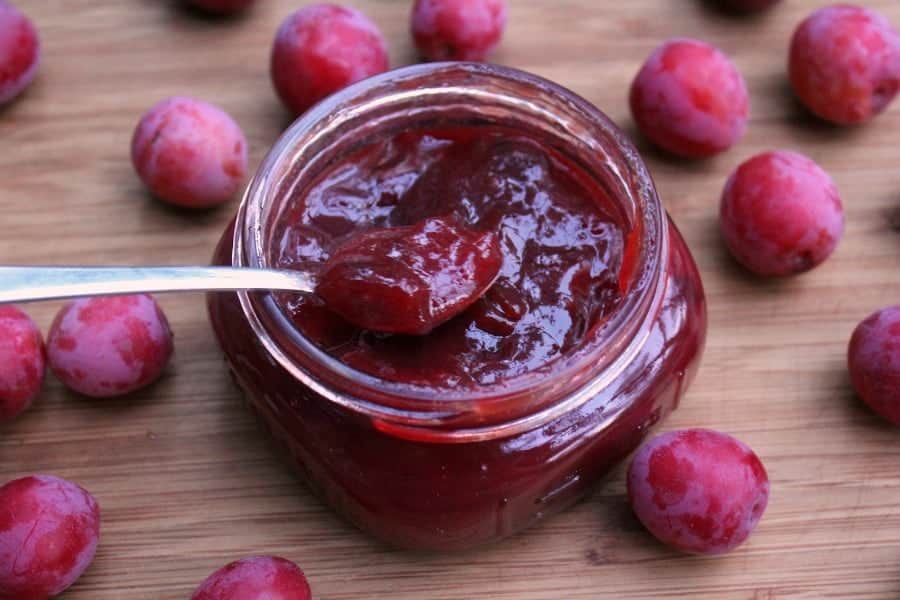
In Vermont, the first wild plums ripen in early September and individual trees continue producing all the way through October and the first frosts of winter. Unlike commercial plums, that have been bred for size and intense sweetness, wild plums are small and often tart. Plums don’t come true to seed, and each wild plum tree will produce fruit with a slightly different taste.
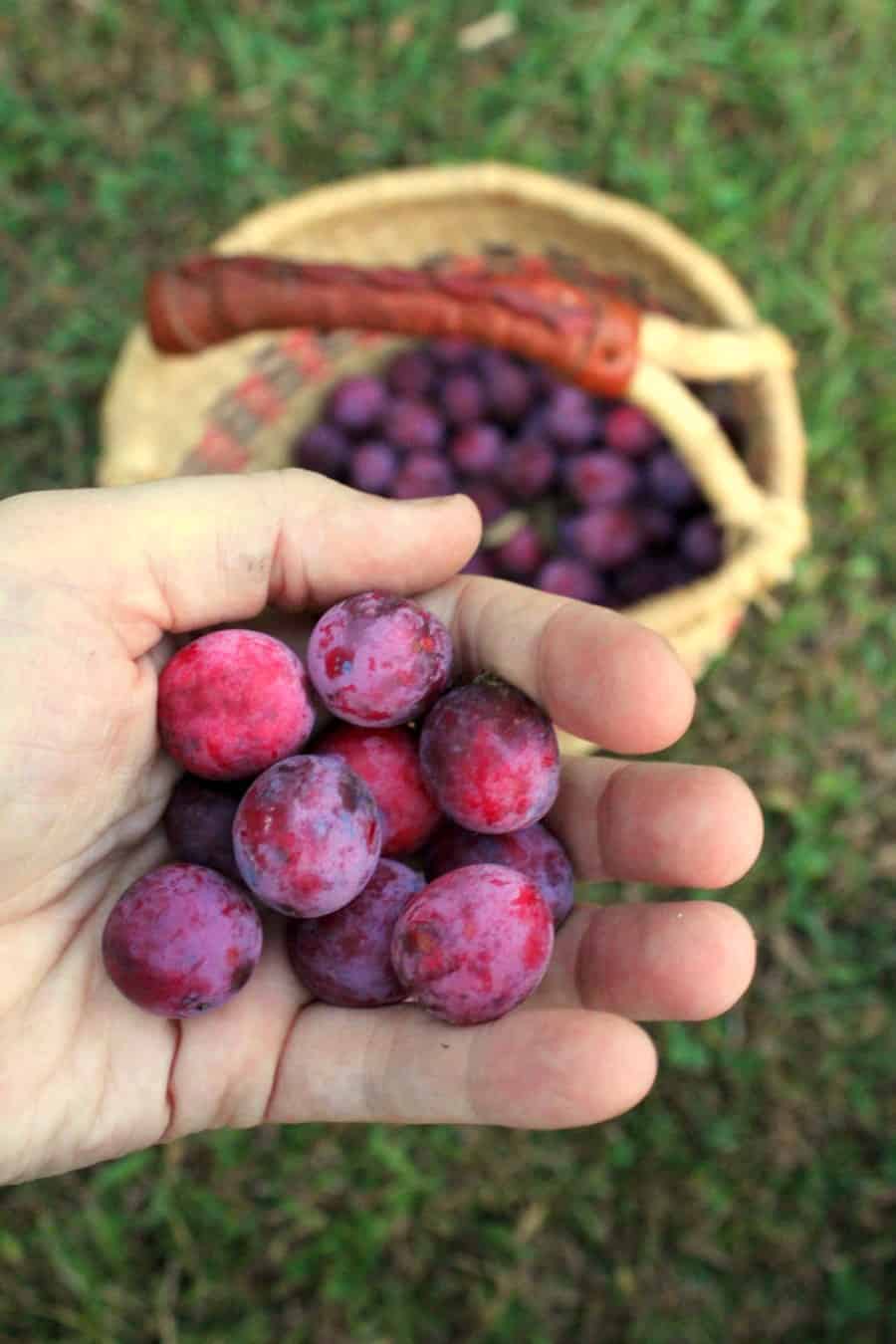
Some will be pleasant for fresh eating, but many have hints of bitterness and tanning, and they can pucker the mouth. Once you add a bit of sugar, all that pucker turns into a complexity of flavor.
Historically, wild apples with tart or bitter flavors were prized additions to homemade cider. When you’re pressing apples for cider, it’s important to balance sweetness with acid and tannin to create a more rounded flavor. Wild plum jam has that rounded flavor, rather than the one-dimensional sweetness of many commercial jams.
Wild plum skins tend to contain most of the “character” and have more bitter flavor. If you’d like a milder jam, strain out the peels early in the cooking process. I leave them in because I feel they add a beautiful color to the finished jam, as well as a bit of texture. They also contain a good bit of pectin, which helps the jam thicken more quickly.
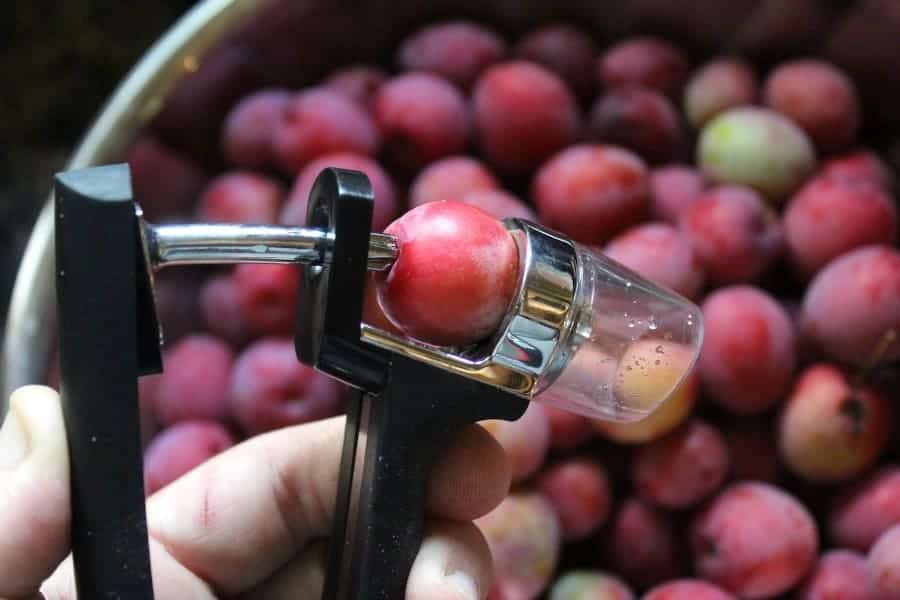
I like to pit the wild plums with a cherry pitter before making jam, and since I don’t have to strain out the seeds, the jam also keeps a chunky texture and colorful plum skins.
After pitting, the plums can go into the pot whole or quickly chopped, depending on your preference. The plums will need a bit of liquid added at the beginning to prevent them from scorching on the bottom of the pot, and I add a bit of lemon juice to the jam at this point for safety.
I didn’t use to be this careful in my canning, and I happily put away jams and canned fruits without added lemon juice. Fruits are acidic, and in my mind, they didn’t need any added acid to reach a safe pH for canning. It wasn’t until I was canning peaches, that I read that some varieties of peaches, namely white peaches, aren’t acidic enough to can.
Fruits need to have a pH below 4.6 to be canned without additional acid, and commercial plums generally have a pH between 2.8 and 4.6. Some plums are dangerously close to the safe line, and when you’re using wild plums there’s no way to know if they’re acidic enough. They tend to taste more acidic than store-bought, but a tiny bit of lemon juice is a good thing to add to be sure.
Most of my homemade jams are low-sugar recipes, regardless of whether or not they use wild or conventional ingredients. There’s just no need to add an absurd amount of sugar to a wild strawberry jam when they’re already so sweet, and less sugar generally means you can taste the fruit better. That doesn’t quite hold true with wild plums. Don’t skimp on the sugar when making wild plum jam, trust me on this one. Weight the plums, and add granulated sugar at a 1 to 1 ratio by weight. If you like sweet jam, you might want to add even a bit more than that.
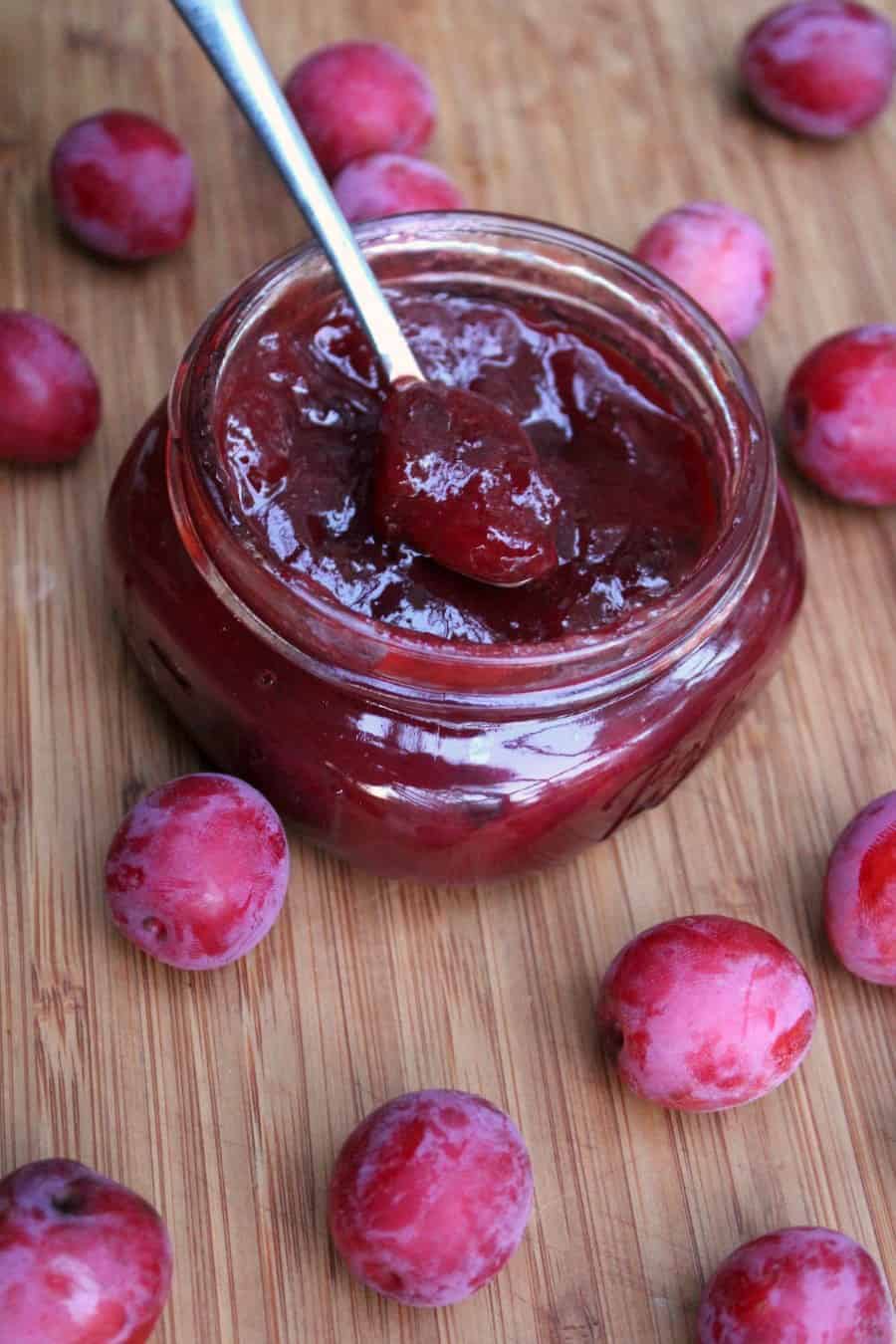
Plums, lemon juice, and sugar are all you need to make a wild plum jam that’s safe for canning. The fruit already contains plenty of pectin and doesn’t require any store-bought pectin.
Substitutions for Wild Plums
Wild plums can be found in just about any climate or region where wild apples grow. They ripen from August through October, though it’ll be later in more northern climates. If you can't find wild plums, store-bought plums can be substituted. To get the pucker of a wild plum jam, add one part cranberries for every 3 parts plum. Since commercial plums tend to be much sweeter, make sure you reduce the sugar by ⅓ to ½.
Wild Plum Jam Recipe
This simple wild plum jam recipe is written to be scaled. For every pound of plums, add in 1 pound of sugar and 1 tablespoon of lemon juice.
- 1 lb Wild Plums
- 1 lb sugar
- 1 tablespoon lemon juice
- Pit the plums and place them into a thick-bottomed pot.
- Add in the lemon juice and cook for a few minutes, until the plums begin to release their juices.
- Add in sugar and stir. Simmer, stirring often for about 10 minutes.
- When the jam thickens, pour it into prepared canning jars. At this point, the jam can either be stored in the refrigerator or processed for 10 minutes in a water bath canner. After a 10-minute process, turn off the heat, wait 5 more minutes, and then remove the jars from the canner.
- Allow the jars to cool, and after 24 hours place any unsealed jars in the refrigerator and use within a few weeks.
Recipe
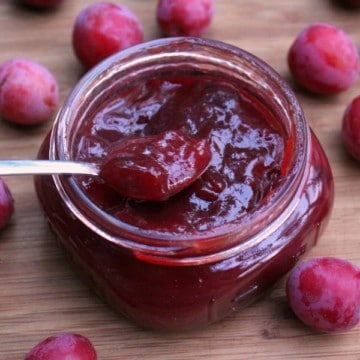
Wild Plum Jam
Ingredients
- 4.5 lb Wild Plums
- 4.5 lb sugar
- 4.5 tablespoon lemon juice
If Using Commercial Plums
- 1.5 lb Fresh or Frozen Cranberries
Instructions
- Pit the plums and place them into a thick bottomed pot.
- Add in the lemon juice and cook for a few minutes, until the plums begin to release their juices.
- Add in sugar and stir. Simmer, stirring often for about 10 minutes. If using commercially grown plums make sure you reduce the sugar by ⅓ to ½ to compensate for the naturally sweeter fruit.
- When the jam thickens, pour it into prepared canning jars. At this point, the jam can either be stored in the refrigerator or processed for 10 minutes in a water bath canner.
- After a 10 minute process, turn of the heat, wait 5 more minutes and then remove the jars from the canner.
- Allow the jars to cool, and after 24 hours place any unsealed jars in the refrigerator and use within a few weeks.
Notes
Nutrition
Nutrition info is auto-generated. This information is an estimate; if you are on a special diet, please use your own calculations.

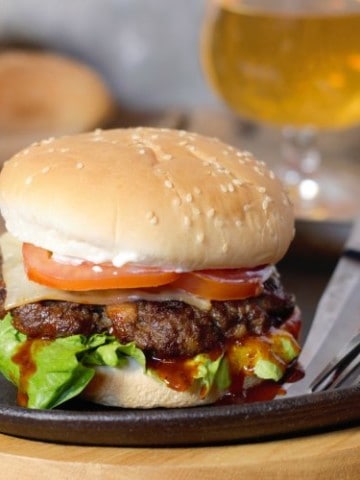
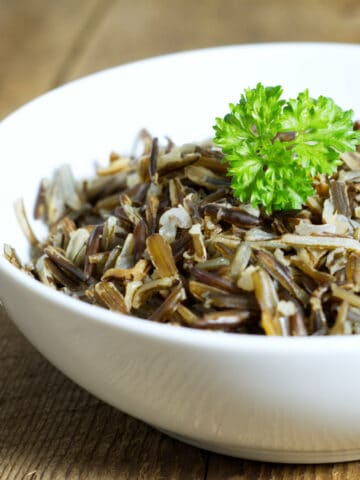
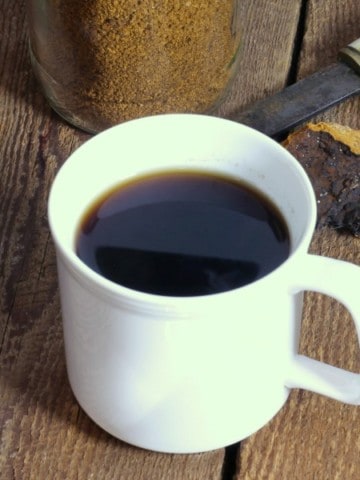
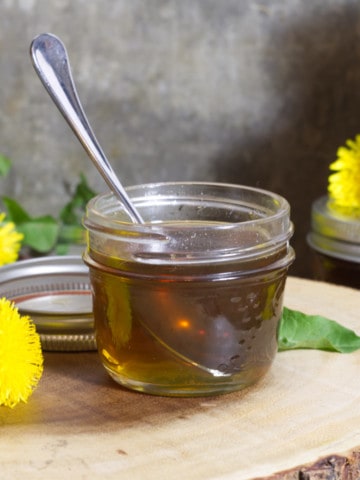
Terry D Gordon
The raccoons have blessed me with a super sweet wild plum tree. I just harvested these plums and ended up with 2 lbs of pitted plums. I have eaten tart wild plums but this little tree gifts the sweetest plums I have ever tasted. I will try your recipe skins on and half the sugar. With your experience do you think this jam will need extra sweetener or more cooking time to set up?
Chef Markus Mueller
It is very hard to know without seeing the jam cooking in the pot. You could always cool a small amount and see how it sets up and then adjust the main batch from there.
Meghan
Hi how many wild plums make 1 pound?
Chef Markus Mueller
Hi Meghan, the weight measurement is given as all wild fruit (and even commercial fruit) will differ in weight based on several factors such as size, maturity, sugar content, and moisture content. The weight measurement is important to insure the recipe ratio works. As all fruit would differ in weight it would be very difficult to 'guess' what one pound of wild plums would look like for you. Your best bet is to invest in a kitchen scale and weigh what you have available to you and adjust the recipe accordingly.
Gestur Davidson
I just made a batch of Wild (aka American) Plum jam with this recipe. I used half the 1:1 sugar as I had these plums from a local Farmers Market and they were very ripe. I also added 1/4 cup of Louis Roque La Vieille Prune Plum Brandy from Gascony! Beautiful hue, aroma and flavor that, yes, you notice that added, extraordinary flavor from this wonderful plum brandy unlike any other.
Sonia Hvozdulycz
Wild plums don't need any lemon juice. They are plenty sour.
Charleen
We have 4 wild plum trees in our yard. (interior of BC). I've already pitted and food processed my plums, Any idea the ratio of plums to sugar for jam?
Chef Markus Mueller
Hi Charleen, yes the ratio used in our recipe is one pound of sugar for every pound of wild plum. If using commercially grown plums which tend to be sweeter, consider reducing the sugar to prevent the jam being overly sweet. This is something you'll need to experiment with depending on the tartness of your plums.
K in Colorado
Hi. Thanks for the recipe and tips.
Following another recipe I found someplace, I've found that using lime juice instead of lemon juice is the better option for plums. The lemon clashes somewhat with the plum flavor, but the lime juice enhances it. Add some cardamon for spiced plum jam.
Chef Markus Mueller
Thanks for the feedback K, I'll have to try the lime juice! Love the idea of adding cardamom aswell!
Nancy
Interesting - I'll try this. I've found that lime juice also works better for blueberries than lemon does.
Riane
Not sure what happened with my recipe but this turned into plum syrup.... I used 2lbs wild plums, 2lbs sugar, and about 3tbsp lemon juice. It thickened up but only to a syrup consistency, even after blending everything (including the skins). It was insanely sweet too. Any ideas?
Chef Markus Mueller
Hi Riane, Did you use wild plums or ones purchased at the grocery store? Commercially grown plums are generally much sweeter than the wild variety which would explain why it turned out so sweet. As suggested in the recipe, you could also add some cranberries to the jam to add some tartness to it. The amount of water content in the fruit would also affect the consistency. You could cook the jam longer to reduce the amount of liquid present. I hope that helps.
Brett
Wild plums have lots of pectin so this should not be a problem if you have cooked down (reduced) your jam enough. Always test. Some use a cold plate that is kept in the freezer then dribble some of your jam on it. If it becomes "jam like" on the plate, it should be ready. I prefer a more scientific approach, which is to measure the temperature. Sea level temperature of 221°F is supposed to be jam, 219° syrup and so on adjusted for elevation. At 900 ft ASL 219 is my jam temp, though I prefer a runnier jam and cook mine to 216-218°F.
Terra
Could it be she used 3 tbs rather than 1 per lb?
Shirleen Holt
The author is too humble. This is by far the best jam I've ever had, and when I give away jars to friends, they tell me it's the best jam they've ever had. A friend has yellow and red wild plum trees that yield so much fruit in August I can fulfill "orders" of three dozen 16-ounce jars until well past Christmas.
As noted in the article, the key to the jam's bright, fresh fruity flavor is the skin-to-pulp ratio. The skins give the jam a tartness that tastes more like a marmalade than the sugary jam made with large plums.
I use a cherry pitter and check each plum before adding it to the bowl. (Even with this method, the small pits can easily hid in the fruit folds and end up in your jar, so the extra care is needed.)
Unfortunately, I've never had a batch set without using pectin. I do a ratio of 5 lbs fruit, 5 lbs sugar, lemon juice and one box pectin.
Karen
Hi there! Can you just cut the plums in half to get pit out?
Chef Markus Mueller
Hey Karen, I don't see why not!
Raymond Lehman
I've made jelly from wild plumbs for a few years now with no pectin. But, I haven't pitted them before cooking them down. Should I really be pitting them? How will it change the flavor?
Chef Markus Mueller
Hey Raymond, I'm honestly not sure how it would change rhrhe flavor ad I have never made the jam without pitting the plums first. It you have always done it without problems I can assume you can just keep doing it that way.
If you do try putting the plums first let me know if you notice a flavor difference!
Jo-Anne
Hello Raymond,
Yes, please remove the pits from the plums before cooking and don't eat them. Plant from the genus Prunus - Plums, Cherries, Peaches, Nectarines etc... Can indeed all grow on the same tree (with grafting). However, they also have something else in common Cyanide in the leaves and something called amygdalin which breaks down into hydrogen cyanide when ingested. This is indeed a poison. That's one of the reasons these trees are so precious to find now. When a lot of land was used for cattle/horses they cut these trees down because it is poisonous to mammals. Please don't do this anymore. I hope you get this message.
Rowena
Tastes good, a mixture of sweet and tart! I should have let it cook longer as it is a little less thick than I wanted but I’ll know for next year.
Chef Markus Mueller
Glad you like it! Yes it would be somewhat tart. Commercial plums would be sweeter then the wild ones.
Diana DeMatei
We moved here to our house 2 years ago and have a wild Plum tree in our front yard. I was so happy to find this recipe.
It calls for 1 lb of wild plums to 1C sugar.
Is that 1 lb of plums picked and weighed with the pit, or 1 lb of already pitted plums?
Thank you?
Chef Markus Mueller
Hi Diana, weigh the plums first then pit them.
Have fun!
Chef Markus
Lynne
Good question!
About the other question regarding cooking with the pits: I read a recipe for apricot jam that called for boiling the inner pit for added natural pectin. The get the inner pit, you must break the pit to reveal a nut-like product that I added to the pot with a tea/herb bad.
Rebecca Davis
So that's TWELVE cups for 6 lbs of plums? That just doesn't seem right to me! Do you really have to put that much sugar???
Chef Markus Mueller
Hi Rebecca, wild plums are VERY tart, so yes that number is correct. I would reduce the amount of sugar if you purchase plums from the store, which are generally much sweeter. Keep in mind the sugar is also needed to help set the pectin and thicken the jam.
Brett
I have been making jams and jellies from homegrown fruit including sour cherry, Nanking cherry, choke cherry, raspberry, plum, wild plum (Canada plum), blueberry, saskatoon, ground cherry (Mmmm! My favourite!) and any other fruit I can find (aronia berry if I can find enough this year) for many years. Everybody in my family has a different taste evaluation, so I think it is fair to say that the amount of sugar is dependent on one's own taste. I have never used a 1:1 ratio of fruit to sugar as I find that ludicrously sweet...for me and my family. So, I suggest adding half the sugar, then tasting it and go from there. Also, the skins are different every year and in any given year the jam may require more or less sugar. Also, removing some of the skins (you need some for their pectin) will change the flavour and will allow the user to use less sugar. Users should realize that there is a minimum amount of sugar required to allow the fruit to set, so if they want to use artificial sweeteners, they may need to use no-sugar pectin.
Olivia
Any idea how long they will last if canned?
Chef Markus Mueller
Hey Olivia, it properly canned and stored, homemade jams can last up to two years unopened. Once opened they should be stored on the fridge and used within 3 months.
Terra
Could it be she used 3 tbs rather than 1 per lb?
Chef Markus Mueller
I beleive the recipe is written to be scaled. For every pound of plums, add in 1 pound of sugar and 1 tablespoon of lemon juice. The lemon juice ensures theere is enough acid to safely can the wild plum jam .
Erika
My mother-in-law in Mankato, MN let me pick all of the wild plums in her yard last Sunday to make jam. Finding this recipe was a blessing, as I did not know how to make wild plum jam and have only made any kind of jam once before, and it didn't turn out. I made this yesterday and it turned out thick and delicious! I pitted all of the plums with a knife, as I did not have a cherry-pitter. With my experience, it took much longer than 10 min. to thicken. After about 25 min. of simmering, I ended up using my submersible hand blender to chop up the skins, and then it thickened right up, and became a very thick jam consistency when cooled. From 4.5 lbs. of wild plums, it made about 12 cups of jam. So delicious!!!
Susan
I also needed to cook longer than 10 minutes, and the plum skins were just not breaking down at all. Using the immersion blender was brilliant; texture and consistency were much better! Maybe Minnesota plums are just thicker skinned lol (I’m outside Northfield, MN)
Wendy
You know, I have noticed that many cooking sites confuse sour and bitter. For these wild cherry plums, you say the skins are bitter. They are not, they are sour. Bitter has an alkaline ph (7-14) whereas sour has an acidic ph (7 and under). Please pass this along to all your cooking friends.
Chef Markus Mueller
Thanks for that interesting bit of info Wendy, I'll pass it along.
Ashley
So glad to find this recipe! I picked 7 lbs of plums from my grandparents plums trees and can’t wait to process them tomorrow!
Chef Markus Mueller
Fantastic Ashley! I'd love to see pictures when the jam is done! Tag us on social media @earthfoodandfire!
Chef Markus
Bill Temereski
I just made a batch from foraged plums. The plums were very dark in colour and the size of a cherry. The recipe I used called for Certo and I guessed at the amount of Certo needed and have a feeling the jam/jelly will have set much too firmly. But, it does have a beautiful taste and colour. I removed all the skins for the batch I made. I will make more using these directions. I will cook the plums and leave the skins on and you say I will not need any Certo or other thickening agent as the skins have natural pectin. The plums are beside a walking trail and no one seems interested in them so I am helping myself. The blackberries are all picked over but not the plums. A bonanza for me. Do you have a recipe for blackberry jam??
Chef Markus Mueller
Hi Bill, I don't have a recipe for blackberry jam....yet! Haha. I would love to know how your next batch of jam turns out with the skins on!
Emilie Solomon
About how many wild plums in a pound?
Chef Markus Mueller
Hi Emilie, that's hard to say because the size of wild plums can vary depending on location etc., which is why this recipe is measured by weight, to ensure a consistent ratio. Commercial plums are about 6-8 per pound.
Sarah Elias
I live in the UK and have been given some wild plums which are nice but tart. I am going to make this over the weekend, thankyou for the recipe!
Chef Markus Mueller
You're very welcome! I hope you enjoy it!
Jay Brown
We have a pretty large quantity of wild plums beginning to ripen on our acreage here in Texas, and this looks like a fun, easy recipe. Question...do you just leave the skins in the cooked mixture, or do you try to separate them?
Chef Markus Mueller
I leave the skins on, they add some flavour and tartness much as grape skins do in wine. If you are worried about texture you could crush the plums and strain the pulp and juice, though it would be quite a bit more work and be more like a jelly then a jam. I'd love to see pictures of your finished jam! ( @earthfoodandfire on Instagram and Facebook)
Chef Markus
Blake
Wild plum trees are easy to find in the spring because their pretty white blossoms give away their hiding spots. Some of the trees blossoms are very fragrant too. Just remember the locations of the trees you find in the spring and check back in August and September to harvest. Thanks for sharing the recipe! Looking forward to trying it!
Chef Markus Mueller
Thanks for the tip Blake, it's a good way to spot the trees! Glad you like the recipe!
Charlotte Honea
How many jars did the 1 lb. produce?
Chef Markus Mueller
Hi Charlotte, 1 lb of wild plums would not make a whole lot. That ratio was provided to allow you to adjust the recipe to whatever amount of plums you may have. 1 lb's would probably only make about 16 oz (1 x 500 ml mason jar) full.
Remember if using cultivated plums to reduce the sugar content as they are bit as tart as the wild variety.
Chef Markus
Marylyn
I’m going to try this as soon as my plum ripen up. Bought a farmhouse in Manitoba and lucky enough to have a huge tree and never know what to do with the plums but now I’ll make some jam.
Chef Markus Mueller
I'd love to hear how it turns out Marylyn!
Bernice Hill
Look at those cute little plums! Well, they definitely do not grow here in Alberta so I'll have to live vicariously through you. I'm on a concorde grape kick right now!
Charleen
They grow here in the interior of BC, so they should grow in Alberta.
georgie
this looks so yummy! i love making my own homemade preserve but I've only ever done raspberries!!! will have to try this asap!
Chef Markus Mueller
It's delicious! I usually use commercially grown fruit, but am trying to use more wild foraged foods!
Courtney
I had no idea that wild plums were even a thing!! I'd love to figure out how to find some of these up where I live.
Chef Markus Mueller
You can ask around at your local farmers market! Sometimes someone is willing to give up their secret locations!